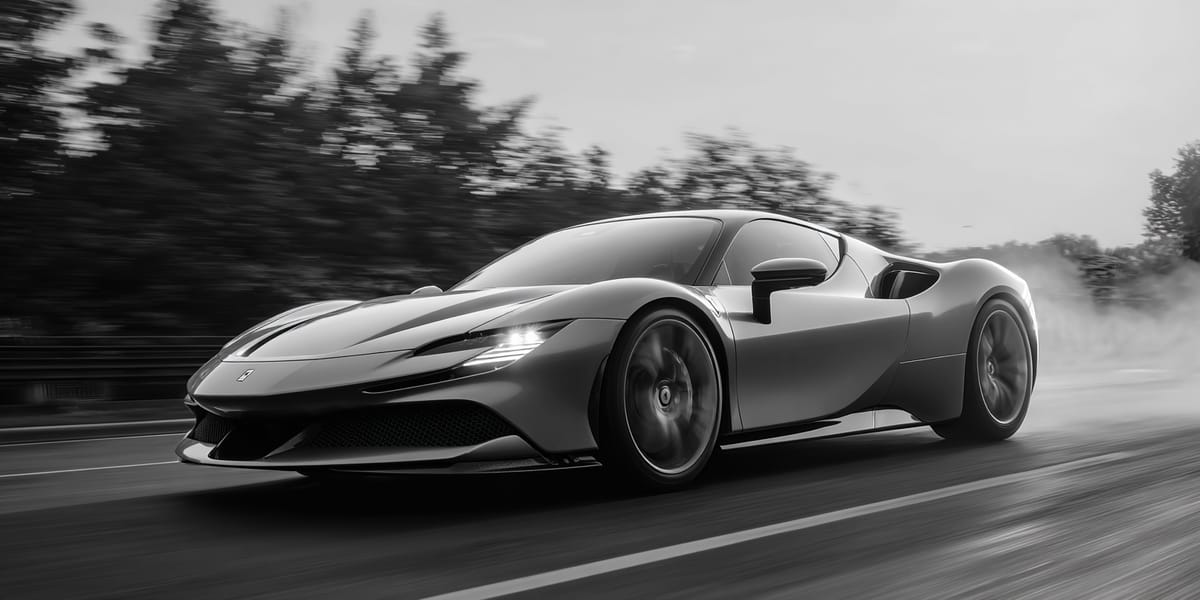Ferrari Shares Plunge After Company Cuts Electric Vehicle Sales Goals

Ferrari announced technical specifications for its first electric vehicle on October 9, 2025, while simultaneously reducing its 2030 electrification targets. According to CNBC, the Italian automaker now expects fully electric vehicles to represent 20% of its 2030 lineup, down from a previously announced 40% target set in 2022.
The company revealed details about its Elettrica model at its Capital Markets Day event in Maranello, Italy. Ferrari shares fell approximately 13% on U.S. exchanges and dropped as much as 16% in Milan trading. The stock decline represented Ferrari's worst single-day performance since its 2015 public listing.
Ferrari also updated its revenue guidance for 2025 to at least 7.1 billion euros, up from a previous forecast of more than 7 billion euros. The company set a 2030 revenue target of 9 billion euros. CEO Benedetto Vigna told reporters the company plans to launch an average of four new cars annually between 2026 and 2030.
Market Response Reflects Conservative Outlook
Investor disappointment centered on Ferrari's revised financial projections and reduced electrification timeline. Yahoo Finance reported that the share price drop eliminated 13.5 billion euros from Ferrari's market valuation in a single trading session.
Analysts at Citi stated the guidance "falls below our lower growth case estimates" and reflects conservatism from management. The firm noted concerns about limited operating leverage through the coming cycle. JPMorgan analysts maintained a different view, expressing confidence in management's execution capability. They cited demand that "far outstrips supply" and praised CEO Vigna's leadership approach.
Ferrari's revised 2030 powertrain strategy now calls for 40% internal combustion engines, 40% hybrid models, and 20% fully electric vehicles. This represents a retreat from the company's 2022 plan, which targeted 40% EVs, 40% hybrids, and 20% combustion engines. The company's active client base has grown to 90,000, a 20% increase compared with 2022 figures.
Luxury Automakers Reassess Electric Vehicle Commitments
Ferrari joins a growing number of premium manufacturers adjusting their electric vehicle strategies. Several global carmakers have scaled back EV sales targets in recent months. Sweden's Volvo Cars abandoned its plan to sell only EVs by 2030 in September 2024, citing the need for "pragmatic and flexible" approaches amid changing market conditions.
The luxury electric vehicle market reached 256.98 billion dollars in 2025, according to industry research. Analysts project this segment will expand to 625.38 billion dollars by 2034, representing a compound annual growth rate of 12.05%. However, challenges include limited affordable models, slower charging infrastructure rollout, and intense competition from Chinese manufacturers.
Electrek reported that Ferrari's Elettrica features a 122 kWh battery pack, over 1,000 horsepower from quad motors, and 330 miles of range. The vehicle accelerates from zero to 100 kilometers per hour in 2.5 seconds. Ferrari developed nearly all components in-house, including battery pack assembly and motor design. The chassis uses 75% recycled aluminum, reducing carbon dioxide emissions by 6.7 tons per vehicle.
The company emphasized its Formula 1 engineering heritage in developing electric motor technology. Ferrari has utilized electric motors in F1 since introducing the Kinetic Energy Recovery System in 2009. The automaker's hybrid race car won the 24 Hours of Le Mans in 2023, 2024, and 2025.
Further Reading
For deeper insights into global adoption trends and regulatory frameworks across different markets, our Alternative Financial Systems Index tracks adoption metrics and policy developments across 50 countries. The index provides data on how regulatory environments shape market dynamics in emerging technology sectors.




